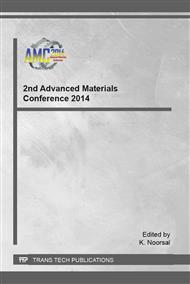p.381
p.386
p.391
p.399
p.404
p.409
p.414
p.419
p.424
The Optical Properties of Epoxy for Temperature Sensitive Sensor
Abstract:
The development of optical fibre temperature indicator using epoxy glue as a detection membrane is presented. This study, investigates the effects of epoxy glue from the reaction of epoxy resin, bisphenol A (BPA) (80-05-7) and adhesive epichlorohydrine (ECH) (106-89-8) as a temperature indicator membrane. In this work the response of epoxy glue to excitation source 395 nm is tested and analyzed under cryogenic conditions. A fiber optic temperature sensor for detecting ambient temperature ranging from 15 °C to 80 °C has been examined. The epoxy glue fluoresce when excited with UV-blue light source. The intensity of the fluorescence of the material decreases when the epoxy glue is exposed to an environment of higher temperature. These decrease level of fluorescence signal has been used to indicate temperature. In this paper, the basic principle of operation, development process and emission response characteristics of this sensor are discussed.
Info:
Periodical:
Pages:
404-408
Citation:
Online since:
January 2016
Authors:
Keywords:
Price:
Сopyright:
© 2016 Trans Tech Publications Ltd. All Rights Reserved
Share:
Citation:


